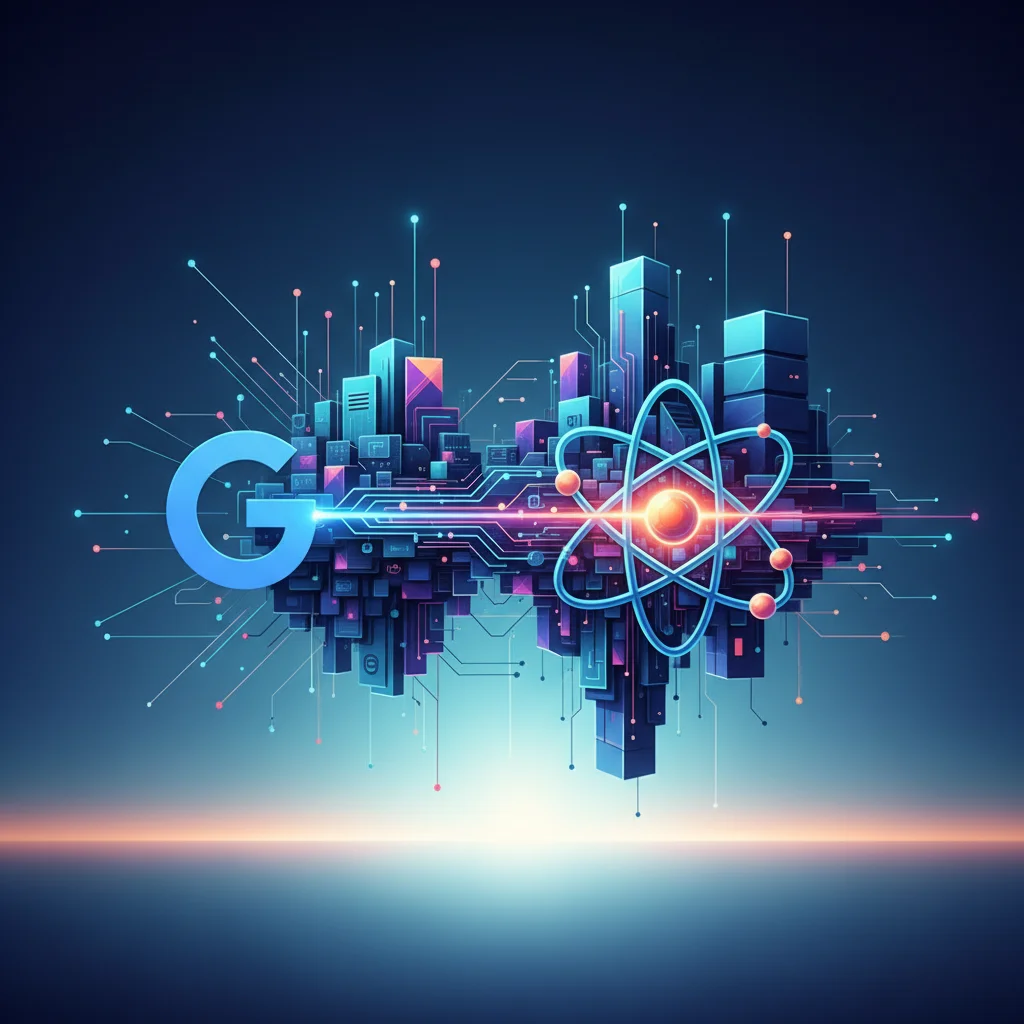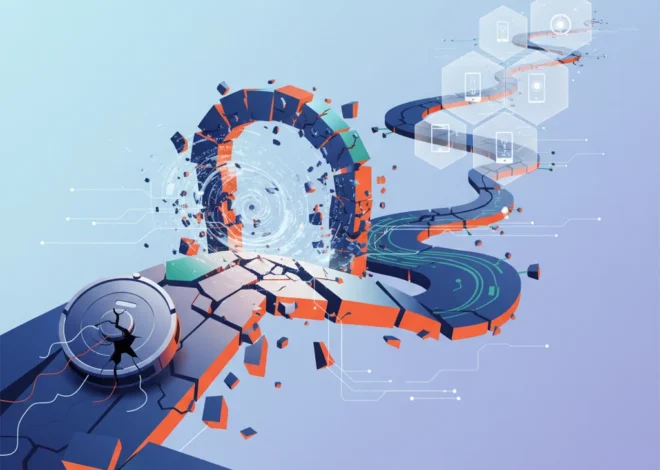
Google’s Nuclear Gambit: Why AI’s Colossal Energy Appetite is Rebooting the Atomic Age
In the relentless race for technological supremacy, we often focus on the elegance of code, the brilliance of algorithms, and the seamless user experience of the latest app. We talk about the cloud as an ethereal, abstract concept. But behind every query, every AI-generated image, and every line of code executed, there’s a physical reality of humming servers, spinning fans, and an almost insatiable hunger for one thing: electricity.
The artificial intelligence revolution, for all its digital marvels, is built on a foundation of brute-force energy consumption. And now, that reality has pushed one of the world’s biggest tech giants into making a move that sounds more like a Cold War-era strategy than a 21st-century tech play. Google has struck a landmark deal with energy company NextEra to help reopen a decommissioned nuclear power plant in Iowa, the Duane Arnold Energy Center, with the goal of powering its sprawling data centers. The plant is expected to be back online and delivering power by 2029.
This isn’t just another corporate sustainability announcement. It’s a seismic shift, a clear signal that the exponential growth of AI and cloud computing is forcing the tech industry to fundamentally rethink its relationship with the power grid. To understand the gravity of this move, we need to look beyond the headlines and explore the powerful currents pushing Silicon Valley toward the atom.
The Unseen Engine: AI’s Voracious Energy Demand
For developers, entrepreneurs, and tech professionals, the performance of our software has always been paramount. But a new, critical metric is entering the equation: energy efficiency. The computational power required to train and run today’s sophisticated artificial intelligence and machine learning models is staggering.
Consider the lifecycle of an AI model:
- Training: This is the most energy-intensive phase. Training a large language model (LLM) like GPT-4 involves processing trillions of data points on thousands of specialized GPUs running nonstop for weeks or months. This process can consume gigawatt-hours of electricity, equivalent to the annual energy consumption of thousands of homes.
- Inference: Once a model is trained, running it to generate answers, code, or images (known as inference) also requires significant power. While a single query is small, the cumulative effect of billions of daily queries on global SaaS platforms creates a massive, constant energy demand.
This isn’t a temporary spike; it’s the new baseline. As AI models become more complex and integrated into everything from enterprise software to consumer gadgets, their energy footprint will only grow. This creates a critical challenge for companies like Google, Microsoft, and Amazon, whose cloud infrastructure powers this revolution. They need more power, and they need it to be clean, reliable, and available 24/7.
The Digital Domino Effect: When the Cloud Stumbles, the World Shakes
Deconstructing the Deal: A Pragmatic Approach to Power
The agreement between Google and NextEra isn’t about building a futuristic new reactor from scratch. It’s about resurrecting an existing one. The Duane Arnold Energy Center was Iowa’s only nuclear plant before it was shut down in 2020 after being damaged in a severe storm, known as a derecho (source). Its decommissioning was already underway.
Google’s involvement provides the financial and commercial certainty for NextEra to reverse this process—a complex and costly endeavor. By providing a long-term power purchase agreement, Google is essentially underwriting the plant’s second life. This is a powerful example of market-driven innovation, where a corporate need directly fuels a major infrastructure project.
Why is this approach so significant? Reopening a plant, while challenging, can be faster and more predictable than getting regulatory approval and constructing a new one from the ground up, a process that can often take over a decade. It’s a pragmatic solution to an urgent problem.
Why Nuclear is Tech’s Unlikely New Best Friend
For decades, the tech industry has championed renewables like solar and wind. Google has been a leader in purchasing renewable energy. So why the pivot to the far more controversial and complex world of nuclear power? The answer lies in the unique demands of data centers.
Data centers are the heart of the digital world. They cannot tolerate downtime. While solar and wind are crucial parts of the clean energy mix, their intermittent nature (the sun doesn’t always shine, and the wind doesn’t always blow) makes them an incomplete solution for the 24/7/365 operational needs of a global cloud network. Nuclear power, on the other hand, provides what’s known as “baseload” power—a constant, reliable, and powerful stream of electricity, regardless of the weather or time of day.
Let’s compare the core attributes of these carbon-free energy sources for powering critical infrastructure.
| Feature | Nuclear Power | Utility-Scale Solar | Onshore Wind |
|---|---|---|---|
| Reliability (Capacity Factor) | Typically >90% (always on) | ~25% (daylight/weather dependent) | ~35% (wind speed dependent) |
| Power Density (Land Use) | Very High (a few square km for a large plant) | Low (requires vast areas for panels) | Low (requires large areas for turbine spacing) |
| Output Stability | Constant and predictable baseload power | Variable and intermittent | Variable and intermittent |
| Carbon Emissions (Operational) | Zero | Zero | Zero |
As the table shows, for the specific needs of a hyperscale data center, nuclear energy’s profile is almost perfect. It aligns with Google’s ambitious goal to operate on 100% 24/7 carbon-free energy by 2030 (source), a goal that is mathematically difficult to achieve with intermittent renewables alone.
Disney's Churn Crisis: What a Celebrity Scandal Teaches Us About AI, SaaS, and the Future of Tech
The Ripple Effect: What This Means for the Tech Ecosystem
This decision will send shockwaves through the entire tech landscape, creating new challenges and opportunities for everyone from individual developers to billion-dollar startups.
For Developers and Software Engineers
The energy cost of computation is becoming a tangible concern. Writing efficient, optimized code is no longer just about speed or reducing latency; it’s about sustainability and cost. In the near future, the carbon intensity of a line of programming could become a key performance indicator. This will drive innovation in green computing and spur demand for tools that can measure and minimize the energy footprint of applications.
For Startups and Entrepreneurs
A massive new market is crystallizing at the intersection of technology and energy. We will see a surge in startups focused on:
- Energy-Aware SaaS: Platforms that help companies monitor, manage, and optimize the energy consumption of their cloud workloads.
- Grid Automation: Using AI and machine learning to create smarter, more resilient power grids that can balance different energy sources in real-time.
- Infrastructure Cybersecurity: As tech companies become more deeply involved in critical energy infrastructure, the need for robust cybersecurity solutions to protect these assets from attack will be paramount. This is a non-negotiable aspect of such high-stakes integration.
For the Cloud Industry
Google has thrown down the gauntlet. Amazon Web Services (AWS) and Microsoft Azure will be forced to accelerate their own baseload, carbon-free energy strategies. We may see a future where cloud providers offer “green zones” or pricing tiers based not just on location, but on the carbon-free reliability of the underlying power source. This move could fundamentally reshape the economics and marketing of cloud services.
The Software That Sees: How AI and a New Eye Implant Are Defeating Blindness
The Path Forward: Navigating Challenges and Embracing Innovation
Of course, the path to a nuclear-powered tech future is not without significant obstacles. Public perception, regulatory hurdles, and the long-term challenge of managing nuclear waste remain contentious issues. The high upfront capital cost and long timelines are also major deterrents.
However, this is where technological innovation re-enters the picture. The industry is buzzing with advancements in next-generation nuclear technology, such as Small Modular Reactors (SMRs). These are smaller, factory-built reactors that promise to be safer, cheaper, and faster to deploy, making them potentially ideal for co-locating directly with large data center campuses.
Furthermore, modern software, automation, and AI are being deployed to make existing and future plants safer and more efficient. Predictive maintenance algorithms can forecast equipment failures, sophisticated simulations can optimize reactor performance, and advanced cybersecurity protocols can defend against threats.
The deal to reopen the Duane Arnold plant is more than just a power purchase agreement. It’s a profound statement about the future. It acknowledges that the growth of the digital world is inextricably linked to the realities of the physical one. The clean, always-on, and data-driven future we are all building requires an energy source that shares those same characteristics. In a surprising twist of technological history, the power of the atom may be the key to unlocking the full potential of artificial intelligence.


